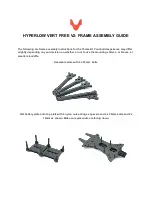
14
15
decreased until the oscillation decreases to show as little movement as pos-
sible. It’s still typical to see some oscillation across the zero line is acceptable
since both graphs depict the offset between two consecutive exposures with
a 2X scale. So, two pixels on the tracking graph are actually equivalent to one
single pixel on the detector. If the oscillation continues even with the guiding
speed at its lowest possible value, the aggressiveness has to be decreased.
If you see constant movement in one direction of X and/or Y, the mount is likely
under correcting. The guiding speed has to be slowly increased until the con-
stant guiding corrections calm down. If no improvement is seen even with the
guiding speed at its highest value, the aggressiveness must be increased.
On nights with bad seeing, and especially with long focal length guide scopes,
it could be worthwhile to slightly defocus the guide star, so that the effect of
high-frequency twinkling is mitigated somewhat and the camera won’t try to
“guide the seeing out”.
Note: Your imaging setup including polar alignment, mount balancing, quality
and solidity of all the mechanical supports and adapters are critically impor-
tant to achieve round stars and well-tracked exposures! Sometimes trailing
due to differential flexure can ruin your pictures even with apparently smooth
tracking.
5. Specifications
Camera
Sensor
Mono 1/3" Aptina MT9V032
Sensor resolution
752x480, 6μm square pixels
Exposure time range
Auto, 0.001 - 2 seconds
Housing
Aluminium, with polycarbonate lid
Nosepiece
Standard 1.25-inch (31.8mm) with filter thread
Connectors
8-pin RJ45
Size and weight
65mm x 50mm, Weight: 110g (3.8 oz.)
Control Paddle
Display
2.5-inch red graphical LCD, 128x64 pixel resolution
Connectors
8 pin RJ45, 12VDC jack, 6 pin RJ12 pin
Size and weight
55mm x 96mm x 28mm, 220g (7.7 oz.)
Power requirements
6-14VDC,110mA
Features
• Automatic guide star search
• Real-time monitoring of guide star position and focus
• Automatic axis calibration with permanent storage of parameters
• Adjustable display red backlight and buzzer volume
• Adjustable dual-axis aggressiveness
• High-precision 0.5 subpixel autoguiding



























